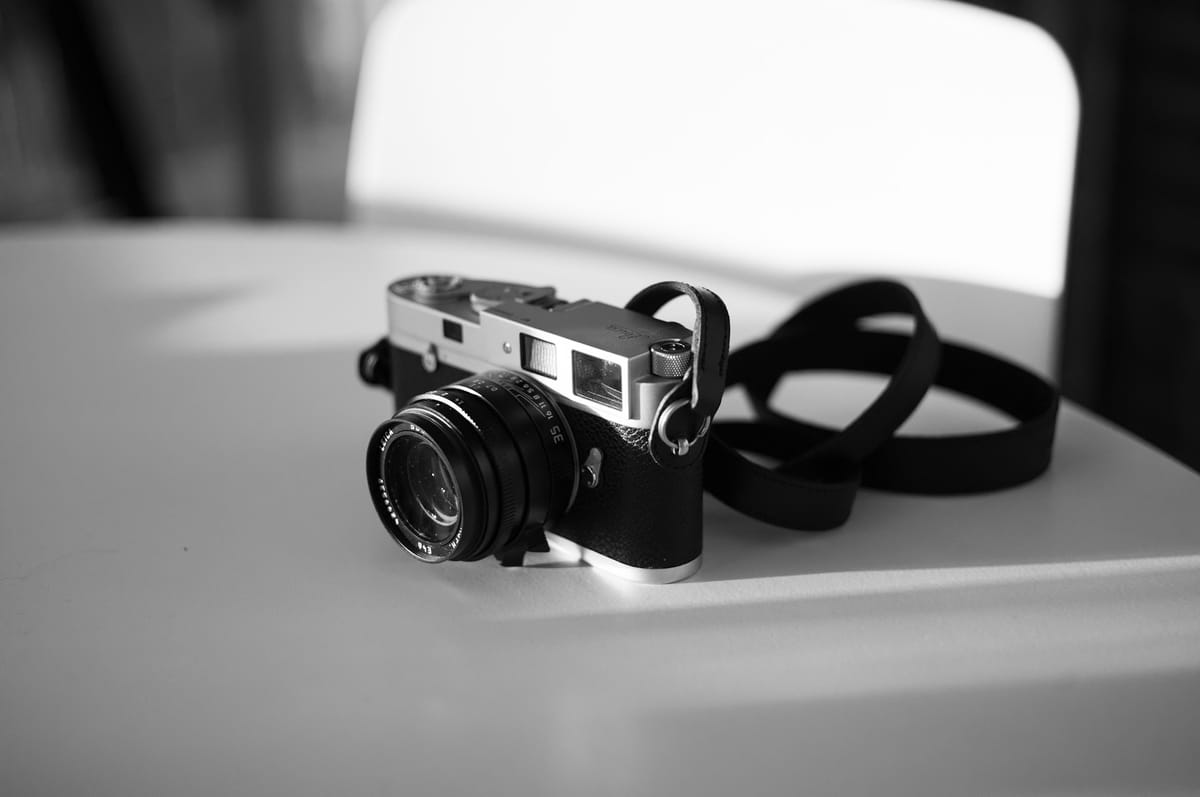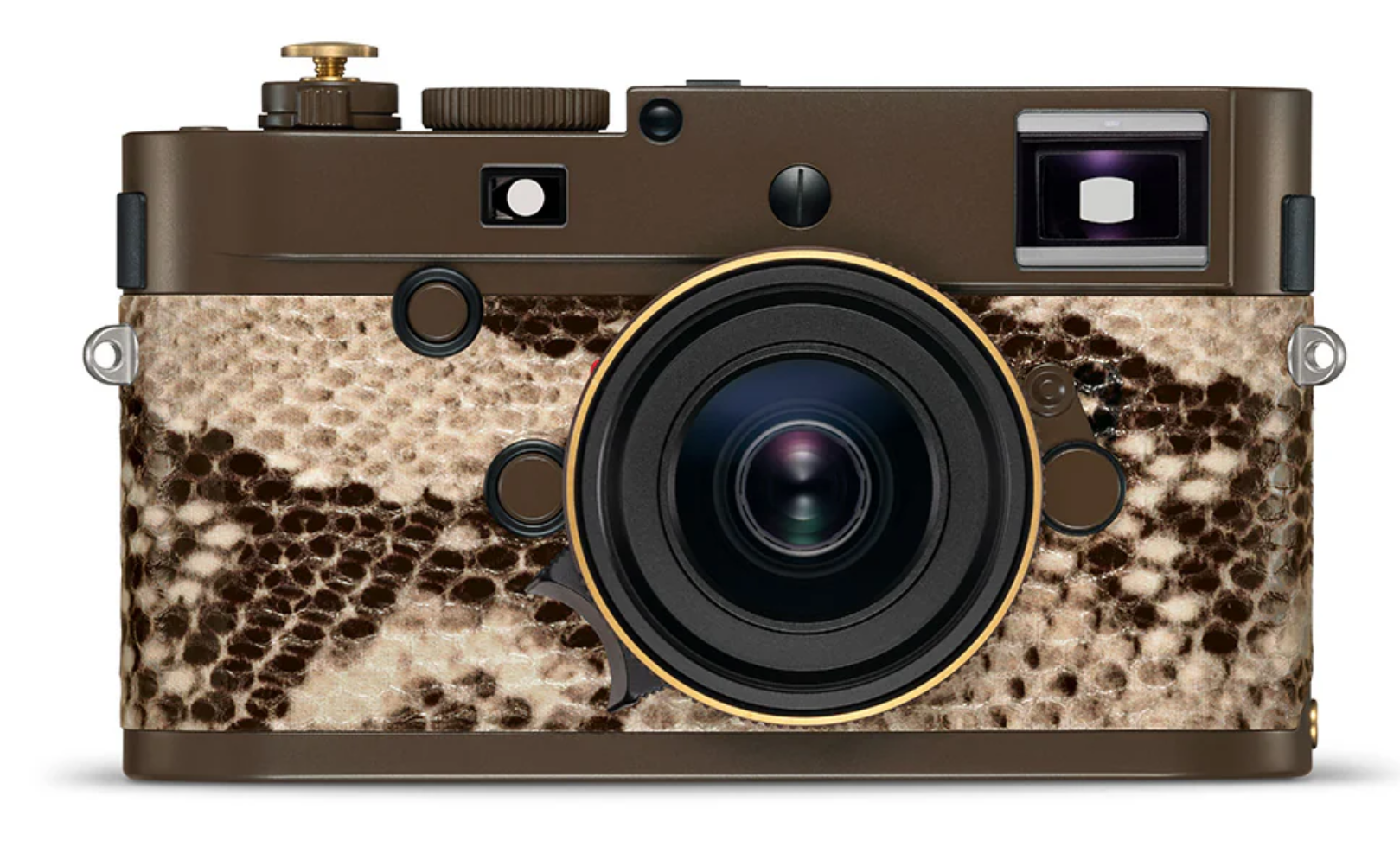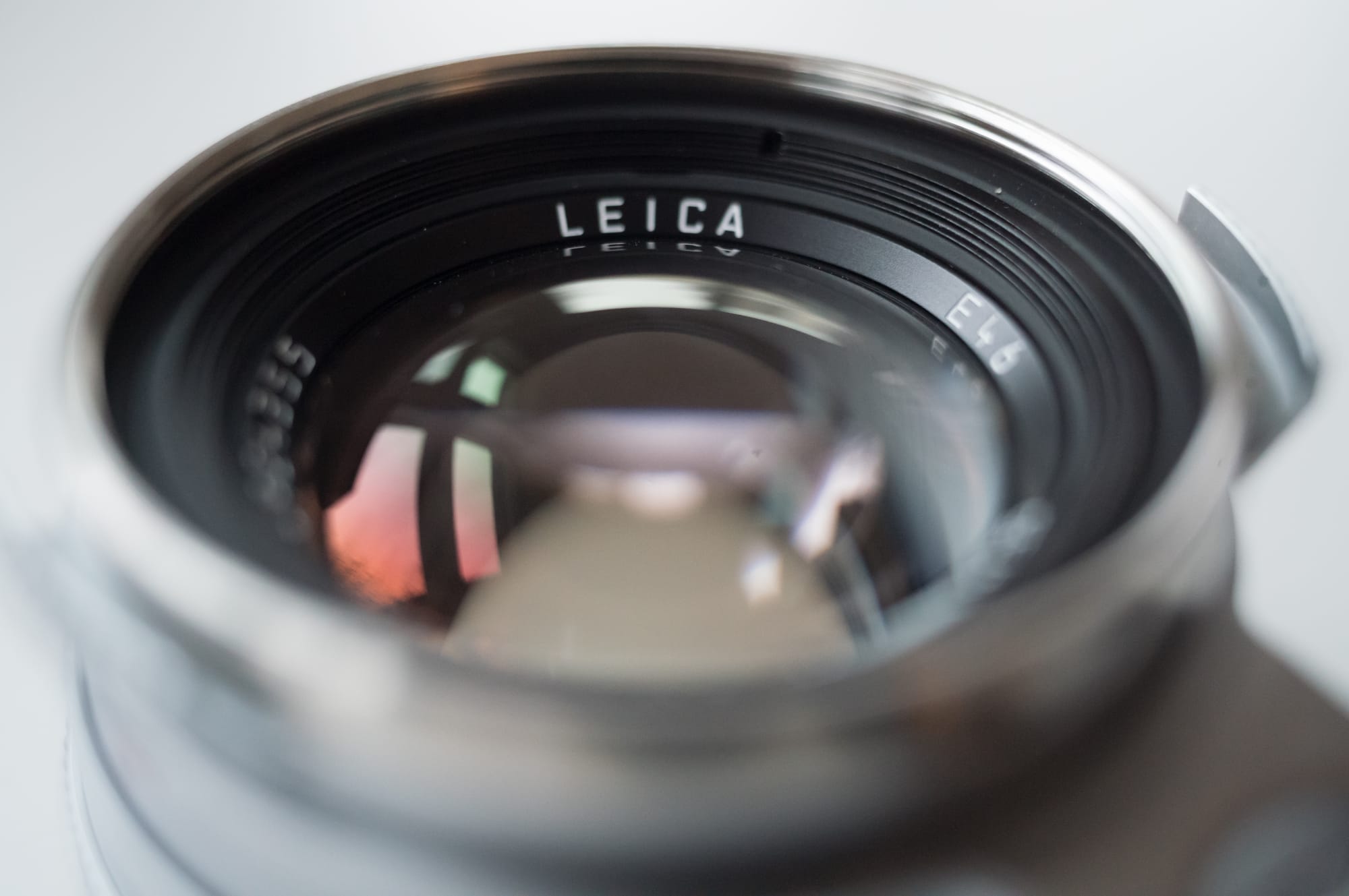The Purity and the Privilege of Owning a Leica

I have a signed copy of Ken Narula’s Iris and Lens, published by Steidl in Germany. It’s a gorgeous rendering of Narula’s street photography in one book and another with images of his Leica lens collection with which he created the images in the first. I enjoy books like this in part for validation of my own not insignificant devotion to Leica.
Leica is a brand that stokes a lot of passion among users and derision among others—at least on social media—because it is misunderstood as merely a luxury brand. Gucci is a luxury brand: nothing about a Gucci bag‘s quality changes the way one carries things. Everything about a Leica changes the way you photograph. Walk into a camera store today and look around. What do you see? Buttons. Lots and lots of buttons. Certainly they serve a purpose and there are many different forms of photography that require automation and speed. But what you notice with Leica cameras is an utter lack of unnecessary buttons; unnecessary to a Leica shooter.
It’s the Lineage
I think Leica has done a great job of cultivating its brand and understanding the motivations of people who buy, or want to buy their products. Leica has an allure for emotional reasons. With its M series, Leica’s lineage draws a direct line from greats like Henri Cartier-Bresson to the camera you hold in your hand. A Leica M made today could nearly be mistaken for the earliest M made in 1954, and in fact, those early cameras are still in use today and they are still precision machines. So many epic photographs were made with these cameras over the last century (if you don’t know, Leica will show you) that one can't help but to imagine that these cameras will somehow elevate your own photography, if only by making you want to live up to their reputation.
Watch a technician testing a circa 1930 Leica I’s shutter mechanism
Watch Jukka, a technician testing a circa 1930 Leica I’s shutter mechanism (1:09:03 mark) remarking how it was still amazingly accurate.
Beer Pocketbook and Champagne Taste
In 1954, the new Leica M3 sold for $288 ($477 with a 50mm Summicron!), which is close to $3,500 (~$5600) in today’s dollars. They were expensive when Cartier-Bresson bought his, but they were unique instruments. They are still hand-assembled, however, today’s M6 sells new for nearly $6,000 and 50mm Summicron sells for over $4,000. It’s impossible for me to know how much of that doubling of price reflects the realities of manufacturing, duties and exchange rates, or a pricing strategy that recognizes higher prices as a differentiator and connotes status.
If you walk into a Leica retail shop they’ll happily sell you a used camera as well as new. The used market for Leicas is brisk. They frustratingly hold their value such that even decades old cameras are still as expensive as other brands’ new cameras. As all makers do, Leica introduces improvements to their digital cameras, but many models—like 2009’s M9 with its pre-CMOS CCD sensor—are still beloved.
So the aftermarket cuts both ways. The elevated prices give you some flexibility to sell your gear, but for buyers there are few bargains and surprisingly high prices. I had to sell years worth of accumulated gear to pay for mine. It takes a collector’s mentality to find value. The Leica Pocket Book—a comprehensive historical classification of Leica cameras and lenses—is super helpful for understanding why some items are more expensive than others. It takes patience and knowledge to do well with the used market.
However, their collectibility presents a tension between the workhorse tool used in war zones and collectible objects of desire. Leica feeds this with limited editions—such as an M wrapped in python!—that I’d guess mostly end up in someone’s collection rather than arsenal of tools. It’s understandable that classic editions of a well made, rare camera have value beyond the practical, yet this less-than-wealthy photographer finds creating superficial scarcity off-putting. The 650 M10 Monochrom “Leitz Wetzler” editions have special engraving on their top plate. That engraving will cost you $1,500 more than the non-engraved version for a camera whose elaborate electronics down the line may cease to work or otherwise may be obsolete. Of course, I don’t have to buy it, but I suspect that collectibility elevates prices for everyday users.

When I walk into a Leica store I have that same disconnect as entering a casino where I sense that my dollars pay for the palace. I get the feeling of unearned privilege. Owning a Leica may put you in the company of greats and serious photographers, but the dilettantes as well, begging the question, which am I?
The Dilettante’s Dilemma
Is it worth it for a photographer whose work will never earn more than they pour into their gear? To be frank, I sometimes feel like I’ve just been sucked in by the mystique and beauty. Perhaps I am the "dentist" (if only metaphorically) the trolls claim the Leica brand caters to! My Leica will see a fraction of use that a professional would enjoy and I do covet it as a beautiful mechanical marvel and I do hang on to its history and specialness.
There are many reasons not to buy a Leica. There are only a handful of focal length that work well with the rangefinder, which is darn hard to use (until you get used to it), and problematic if you wear eyeglasses. And there’s no autofocus. If you drop the damn thing, well good luck if it breaks. Repairs can be expensive and these days take a very long time. They're certainly not for every style of photography, so one needs to "know thyself" before committing.
So why?
When I bought my Leica I had begun a journey to take my photography seriously as a craft and art form more than ever before. I wanted nothing to stand between me and my work. I wanted fully manual control and no fiddly buttons on a screen. The exposure triangle in photography is fundamental and I don't want to think about anything other than my shot. The years I used SLRs left me never fully understanding their functionality. I find my images are better the more control with a camera that gets out of my way. I also wanted a camera light enough I never had to decide if I should take it with me or not.

Those are the parameters with which I turned to the brand I had revered for ages because I could find nothing like it. And then I held one. Oh, I felt it; love at first click. Seriously, if you have one you may know what I mean.
Of course, gear doesn’t matter, does it. That's a loaded concept for many, but the essence of it is that gear itself can't make you a better photographer. That said, what I learned using my Leica with all its constraints has given me the confidence to use any camera, and using a rangefinder and manual focus lenses feels perfectly natural now. I came for the manual controls and I stay for the manual controls.
Magic can Only Come from a Skillful Hand
The “Leica Look” may be mythological, but my theory is that it exists because the images taken with them are by people who bring a high level of seriousness to their work. Leicas don’t make the images better, they allow the photographer to be better by getting out of the way. My discomfort with the privilege remains, but it’s that intentionality that has made all the difference to me and my work.